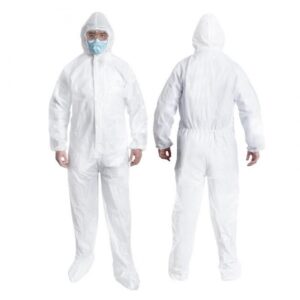Surgical procedures are complex, delicate, and often involve high risks. Ensuring patient safety is a top priority, and proper preparation of the operating room (OR) is critical in reducing the risk of surgical site infections (SSI). One essential element in OR preparation is the use of surgical drapes.


Surgical drapes are used to cover and isolate the surgical site from the rest of the patient’s body and the surrounding environment. They help prevent contamination by creating a sterile field around the surgical site, reducing the risk of infection. They also help to control the spread of microorganisms and bodily fluids during the surgical procedure.
There are various types of surgical drapes available, and each type is designed for specific surgical procedures. Surgical drapes can be categorized into three types: basic, standard, and high-performance.
Basic surgical drapes are typically made of non-woven materials and are suitable for simple surgical procedures. They are affordable and disposable, making them a popular choice for many hospitals and clinics.
Standard surgical drapes are made of more durable materials and offer greater protection against fluid penetration and microbial migration. They are ideal for more complex surgical procedures where there is a higher risk of contamination.
High-performance surgical drapes are the most advanced type of drapes available. They offer the highest level of protection against fluid penetration and microbial migration and are often used for high-risk surgical procedures such as organ transplants and cardiac surgeries.
The quality of surgical drapes can vary, and it is essential to use high-quality drapes that meet industry standards. The Association for the Advancement of Medical Instrumentation (AAMI) has established guidelines for the selection and use of surgical drapes to ensure patient safety. These guidelines specify the performance levels that surgical drapes should meet, including fluid resistance, microbial barrier protection, and linting.
Proper placement of surgical drapes is also critical in ensuring patient safety. Drapes should be positioned to cover the entire surgical site and should not be touched or moved once the surgical procedure has begun. Any tears or holes in the drapes should be immediately repaired or replaced to maintain the sterile field.
In conclusion, surgical drapes play a vital role in ensuring patient safety during surgical procedures. They help create a sterile field around the surgical site, reduce the risk of infection, and control the spread of microorganisms and bodily fluids. It is important to use high-quality surgical drapes that meet industry standards and to ensure proper placement of the drapes to maintain the sterile field. By following these best practices, healthcare providers can reduce the risk of surgical site infections and improve patient outcomes.
